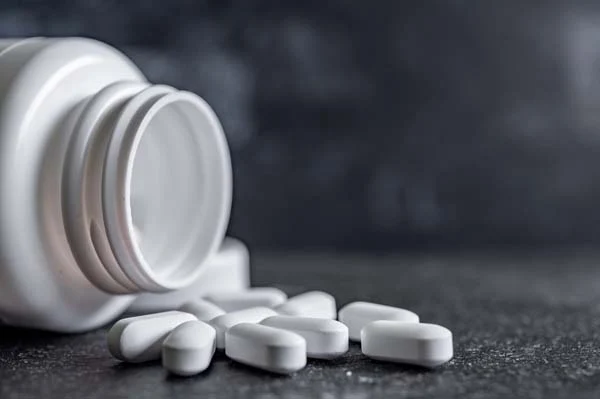Are you or a loved one struggling with addiction? Do you feel like you’re stuck in a never-ending cycle of substance abuse and despair? If you’re tired of fighting this battle alone, you’re not alone. Many people feel the same way, but there is hope and help available. In this blog, we will explore Medically Assisted Treatment (MAT) – a proven and effective way to treat substance abuse disorders. You’ll learn about the best medications for different types of substance use disorders, how they work, and why they might be the right choice for you or your loved one. So, let’s dive and in!
Contents
Benefits of MAT in Substance Abuse Recovery
Medically Assisted Treatment (MAT) offers several powerful benefits that can make a significant difference in your recovery journey:
- Reduces Withdrawal Symptoms: Eases the physical and mental discomfort of withdrawal.
- Prevents Relapse: Manages cravings and stabilizes brain chemistry to lower the risk of relapse.
- Promotes Long-term Recovery: Provides a steady foundation to support lasting changes and sobriety.
- Improves Overall Health: Enhances physical and mental health by reducing substance use.
- Enhances Quality of Life: Helps you rebuild relationships, return to work or school, and engage in activities that bring joy.
With these benefits, MAT can provide the support and stability needed to overcome addiction and lead a healthier, more fulfilling life.
Types of Medications Used in MAT
 Medically Assisted Treatment (MAT) involves various medications that help manage substance use disorders. These medications fall into different categories, each playing a unique role in the recovery process:
Medically Assisted Treatment (MAT) involves various medications that help manage substance use disorders. These medications fall into different categories, each playing a unique role in the recovery process:
Opioid Agonists
- Methadone: Reduces cravings and withdrawal symptoms by activating opioid receptors in the brain.
- Buprenorphine (Suboxone): A partial agonist that activates opioid receptors but with less intensity, reducing misuse potential.
Partial Agonists
- Buprenorphine (Suboxone): Serves as both a partial agonist and antagonist, providing a balance that helps minimize withdrawal symptoms and reduce cravings without producing a full opioid effect.
Antagonists
- Naltrexone (Vivitrol): Blocks opioid receptors, preventing any effects from opioid use, and helps reduce cravings for both opioids and alcohol.
- Disulfiram (Antabuse): Used for alcohol use disorder, causing unpleasant reactions when alcohol is consumed, deterring drinking.
These medications are designed to support recovery by managing withdrawal symptoms, reducing cravings, and helping to maintain long-term sobriety. Each type plays a crucial role in a comprehensive MAT program, tailored to individual needs for the best outcomes.
Medications for Opioid Use Disorder

Medically Assisted Treatment (MAT) for opioid use disorder includes several effective medications that can help manage addiction. Here are the key medications used, how they work, their benefits, and potential side effects:
Methadone
- How It Works: Methadone is a full opioid agonist that activates opioid receptors in the brain, reducing withdrawal symptoms and cravings.
- Benefits: Methadone helps stabilize patients, allowing them to engage in therapy and other recovery activities without the constant distraction of withdrawal symptoms.
- Side Effects: Possible side effects include drowsiness, constipation, and sweating. There is also a risk of dependence and overdose if not properly managed.
- Effectiveness: Methadone has been shown to be highly effective in reducing opioid use and improving retention in treatment programs.
Buprenorphine (Suboxone)
- How It Works: Buprenorphine is a partial opioid agonist, meaning it activates opioid receptors but to a lesser extent than full agonists like methadone. Suboxone is a combination of buprenorphine and naloxone to prevent misuse.
- Benefits: Buprenorphine reduces withdrawal symptoms and cravings with a lower risk of misuse, dependence, and side effects compared to full agonists.
- Side Effects: Potential side effects include headaches, nausea, and insomnia. Some patients may experience withdrawal symptoms if they stop taking the medication abruptly.
- Effectiveness: Buprenorphine is highly effective in reducing opioid use, preventing relapse, and retaining patients in treatment. It is often preferred for its safety profile and ease of prescribing.
Naltrexone (Vivitrol)
- How It Works: Naltrexone is an opioid antagonist that blocks opioid receptors, preventing any opioid from producing its effects. Vivitrol is a long-acting injectable form of naltrexone.
- Benefits: Naltrexone helps prevent relapse by eliminating the rewarding effects of opioids. It also reduces cravings and is not addictive.
- Side Effects: Possible side effects include injection site reactions, nausea, headaches, and fatigue. There is a risk of severe withdrawal if opioids are used before starting naltrexone.
- Effectiveness: Naltrexone is effective in preventing relapse and reducing cravings, especially when combined with counseling and support. It is particularly beneficial for those who have already detoxed and are committed to remaining opioid-free.
These medications, when used as part of a comprehensive MAT program, can significantly improve outcomes for individuals struggling with opioid use disorder. They help manage withdrawal symptoms, reduce cravings, and support long-term recovery, leading to a healthier and more stable life.
Medications for Alcohol Use Disorder

Treating alcohol use disorder can be challenging, but several medications have proven effective in supporting recovery. Here are the key medications used, how they work, their benefits, and potential side effects:
Disulfiram (Antabuse)
- How It Works: Disulfiram interferes with the metabolism of alcohol, causing unpleasant reactions such as nausea, vomiting, and headache when alcohol is consumed. This deters people from drinking.
- Benefits: Disulfiram is effective in promoting abstinence by creating a strong deterrent to drinking. It is particularly useful for those who are highly motivated to stay sober.
- Side Effects: Possible side effects include drowsiness, fatigue, headache, and a metallic or garlic-like taste in the mouth. Severe reactions can occur if alcohol is consumed.
- Effectiveness: Studies show that Disulfiram is effective in reducing alcohol consumption and promoting abstinence, especially when combined with supportive therapy.
Naltrexone (Revia)
- How It Works: Naltrexone blocks opioid receptors in the brain, reducing the pleasurable effects of alcohol and decreasing cravings.
- Benefits: Naltrexone helps reduce heavy drinking and the urge to drink, supporting patients in their efforts to maintain sobriety.
- Side Effects: Possible side effects include nausea, headache, dizziness, and fatigue. In rare cases, it can cause liver damage.
- Effectiveness: Research indicates that Naltrexone is effective in reducing relapse rates and decreasing the frequency and severity of drinking episodes. It works best when used in conjunction with counseling and support groups.
Acamprosate (Campral)
- How It Works: Acamprosate restores the balance of neurotransmitters in the brain that are disrupted by chronic alcohol use. It helps reduce the physical and emotional distress associated with abstinence.
- Benefits: Acamprosate supports long-term abstinence by reducing the symptoms of post-acute withdrawal, such as anxiety and insomnia.
- Side Effects: Common side effects include diarrhea, nausea, and headache. It is generally well-tolerated and does not have addictive properties.
- Effectiveness: Studies have shown that Acamprosate is effective in maintaining abstinence and improving overall recovery outcomes, especially when combined with psychosocial support.
These medications, each with its unique mechanism of action, provide valuable support for individuals struggling with alcohol use disorder. By reducing cravings, deterring drinking, and alleviating withdrawal symptoms, these treatments enhance the chances of achieving and maintaining long-term sobriety.
Medications for Nicotine Dependence

Overcoming nicotine dependence can be challenging, but several medications have been proven effective in helping people quit smoking. Here are the key options available, how they work, and their benefits and side effects:
Nicotine Replacement Therapy (NRT)
- How It Works: NRT provides a low level of nicotine without the harmful chemicals found in tobacco smoke. It helps reduce withdrawal symptoms and cravings by delivering nicotine through patches, gum, lozenges, inhalers, or nasal sprays.
- Benefits: NRT helps smokers gradually reduce their dependence on nicotine, making it easier to quit smoking. It is available over-the-counter and comes in various forms to suit individual preferences.
- Side Effects: Common side effects include skin irritation (with patches), mouth or throat soreness (with gum or lozenges), and nasal irritation (with nasal spray). Generally, NRT is well-tolerated.
- Effectiveness: Studies have shown that NRT increases the chances of quitting smoking successfully, particularly when combined with behavioral support.
Bupropion (Zyban)
- How It Works: Bupropion is a prescription medication that affects neurotransmitters in the brain, helping to reduce nicotine cravings and withdrawal symptoms. It is also used as an antidepressant.
- Benefits: Bupropion can double the chances of quitting smoking successfully. It is particularly helpful for people who are also dealing with depression.
- Side Effects: Possible side effects include insomnia, dry mouth, dizziness, and changes in appetite. In rare cases, it can cause seizures.
- Effectiveness: Bupropion has been shown to be effective in helping people quit smoking, with higher success rates when used alongside counseling and support.
Varenicline (Chantix)
- How It Works: Varenicline is a prescription medication that works by blocking nicotine receptors in the brain, reducing the pleasurable effects of smoking and decreasing cravings and withdrawal symptoms.
- Benefits: Varenicline is highly effective in reducing the desire to smoke and can significantly increase the chances of quitting successfully.
- Side Effects: Common side effects include nausea, vivid dreams, and insomnia. There have been reports of mood changes, so monitoring by a healthcare provider is important.
- Effectiveness: Clinical trials have shown that Varenicline is one of the most effective smoking cessation aids available, particularly when combined with behavioral support.
These medications provide valuable support for individuals seeking to quit smoking by reducing cravings, alleviating withdrawal symptoms, and making the process of quitting more manageable.
MAT and Comprehensive Substance Abuse Treatment
While Medically Assisted Treatment (MAT) plays a crucial role in managing substance use disorders, it is most effective when combined with other forms of support. Here’s why integrating MAT with counseling, therapy, and other support systems is essential for comprehensive addiction treatment:
- Counseling and therapy help uncover and address the root causes of addiction, such as trauma, mental health disorders, or emotional pain.
- Therapy provides tools and strategies to cope with stress, triggers, and cravings without turning to substances. Cognitive-behavioral therapy (CBT), for example, is particularly effective in changing harmful thought patterns and behaviors.
- Support groups like Alcoholics Anonymous (AA) or Narcotics Anonymous (NA) offer a community of people who understand the challenges of addiction. Sharing experiences and receiving peer support can be incredibly empowering.
- Activities like yoga, meditation, and mindfulness can complement MAT by reducing stress, enhancing emotional well-being, and promoting a balanced lifestyle.
- Involving family members in therapy can repair and strengthen relationships that have been damaged by addiction. It also educates family members on how to support their loved one’s recovery journey.
Combining Medically Assisted Treatment with counseling, therapy, support groups, and holistic approaches creates a comprehensive addiction treatment plan that addresses the physical, emotional, and psychological aspects of addiction. This integrated approach significantly enhances the chances of achieving and maintaining long-term recovery, leading to a healthier, more fulfilling life.
Seeking Help for Substance Use Disorders
If you or someone you love is struggling with a substance use disorder, seeking professional help is a crucial step towards recovery. Medically Assisted Treatment (MAT) programs, combined with counseling and therapy, offer a comprehensive approach to overcoming addiction. Remember, these programs provide the support needed to manage withdrawal symptoms, reduce cravings, and address the underlying causes of addiction.
At QuitMantra, we understand the challenges of addiction and are here to help you every step of the way. Our dedicated team offers personalized treatment plans that include MAT, therapy, and holistic support tailored to your unique needs. So, don’t wait to take control of your life—visit our website and book your trial therapy session today.
